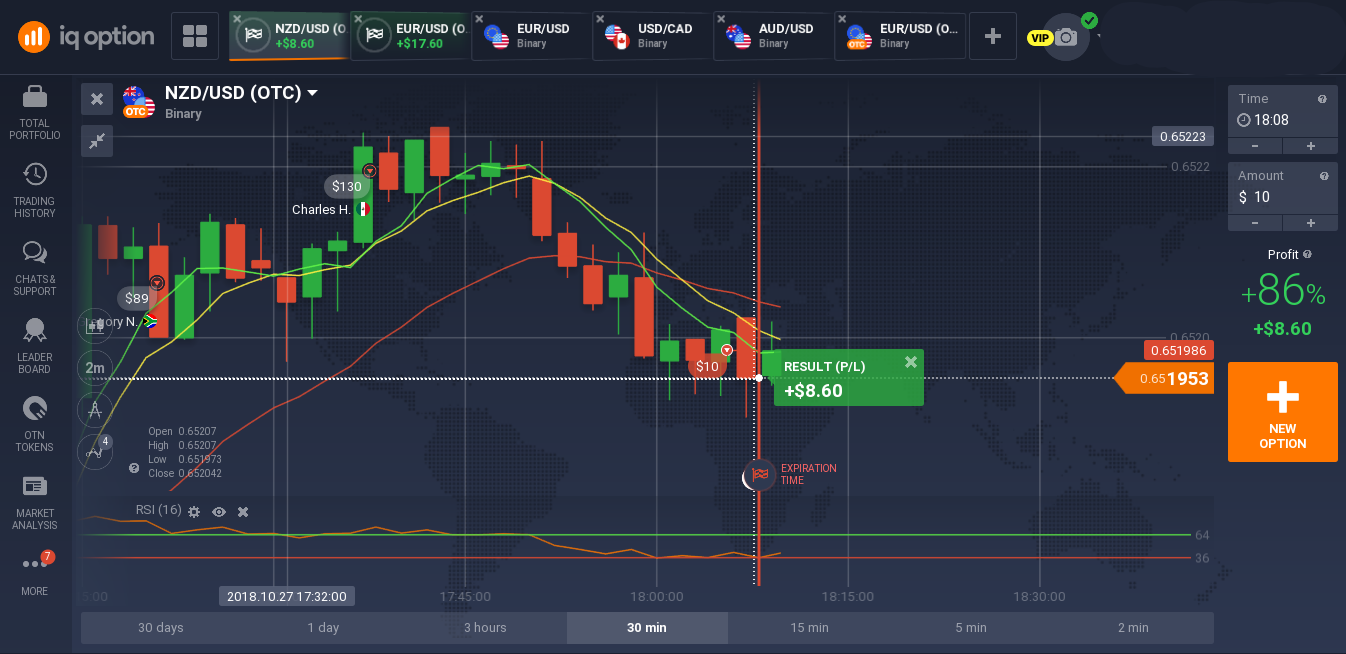Imagine you’re holding a lottery ticket, but instead of hoping for the jackpot, you have the power to predict the outcome. Option trading offers this tantalizing prospect, allowing investors to leverage informed speculation to potentially generate significant returns. But like any financial instrument, options come with a complex set of rules and potential risks. In this comprehensive guide, we delve into the core concepts, types, and strategies of option trading, empowering you with the knowledge to navigate this intricate market.

Image: www.plafon.id
Understanding Options: A Beginner’s Guide
An option is a derivative contract that grants the buyer an exclusive right, but not an obligation, to buy (call option) or sell (put option) a specific asset at a predetermined price (strike price) on or before a defined date (expiration date). Unlike stocks where you directly own the underlying asset, options represent the potential to own them. This element of choice distinguishes options from other financial instruments and opens up a wider range of trading possibilities.
Options contracts typically derive their value from an underlying asset such as a stock, bond, commodity, or currency. The buyer of an option pays a premium to the seller in exchange for the right to buy or sell the underlying asset at the strike price. This premium reflects the market’s assessment of the likelihood that the option will expire in the money, meaning the underlying asset’s price will move favorably for the holder.
Types of Options: Call vs. Put
Call Options: When you anticipate a rise in the underlying asset’s price, you can purchase a call option. With a call option, you have the right to buy the asset at the strike price before the option’s expiration date. If the asset’s price surpasses the strike price, you have the potential to profit from the difference.
Put Options: Conversely, if you expect the underlying asset’s price to decline, you can opt for a put option. With a put option, you have the right to sell the asset at the strike price before the option’s expiration date. If the asset’s price falls below the strike price, you have the opportunity to profit from the price differential.
Option Strategies: Risk and Reward
Options trading involves a wide range of strategies to suit various risk appetites and market conditions. Some common strategies include:
- Covered Call: Selling a call option against an underlying asset you own, limiting potential upside but generating premium income.
- Protective Put: Buying a put option to hedge against a potential decline in the value of an asset you own.
- Bull Call Spread: A combination of buying a lower-strike-price call option and selling a higher-strike-price call option, aiming for limited gains but reduced risk.
- Bear Put Spread: Involves selling a lower-strike-price put option and buying a higher-strike-price put option, benefiting from a decline in asset prices with limited risk.
- Butterfly Spread: A complex strategy involving buying a call option at a middle strike price and simultaneously selling two call options with lower and higher strike prices, targeting specific price movements.

Image: maddisonmoss.z13.web.core.windows.net
Market Analysis and Option Pricing
Choosing the right options strategy requires thorough market analysis and understanding of various factors that influence option pricing. Key considerations include:
- Underlying Asset Price: The current price of the underlying asset and its historical price movements play a vital role in determining option prices.
- Volatility: Market volatility, a measure of how much the asset’s price fluctuates, directly impacts option prices. Higher volatility typically leads to higher option premiums.
- Time to Expiration: The time remaining until the option expires affects its price. Options with shorter expiration times tend to be cheaper than those with longer expiration dates.
- Interest Rates: Interest rates can influence option pricing, especially for longer-term options.
Risks and Considerations: Trading Options Wisely
Options trading offers immense potential but also carries inherent risks. Here are precautions to take:
- Limited Downside Protection: Unlike stock investment, where losses are capped at the value of the investment, option buyers can potentially lose more than their initial premium.
- Time Decay: The value of options decays over time, especially as the expiration date approaches. This time decay can lead to losses if the option expires worthless.
- Margin Requirements: Margin trading allows you to leverage your capital to purchase options, but it also exposes you to increased risk. Brokers often require margin collateral to cover potential losses.
Basics Option Trading
https://youtube.com/watch?v=0LImdzYCA2k
Summary: The Power of Informed Options Trading
Option trading opens up a world of opportunities and risks, empowering investors with the ability to speculate on market movements, hedge their positions, and generate additional income. By understanding the basics of option trading, including types, strategies, market analysis, and potential risks, you can potentially leverage this instrument to enhance your financial toolkit. However, it’s crucial to proceed with informed decisions, manage risk prudently, and seek professional advice when necessary.






